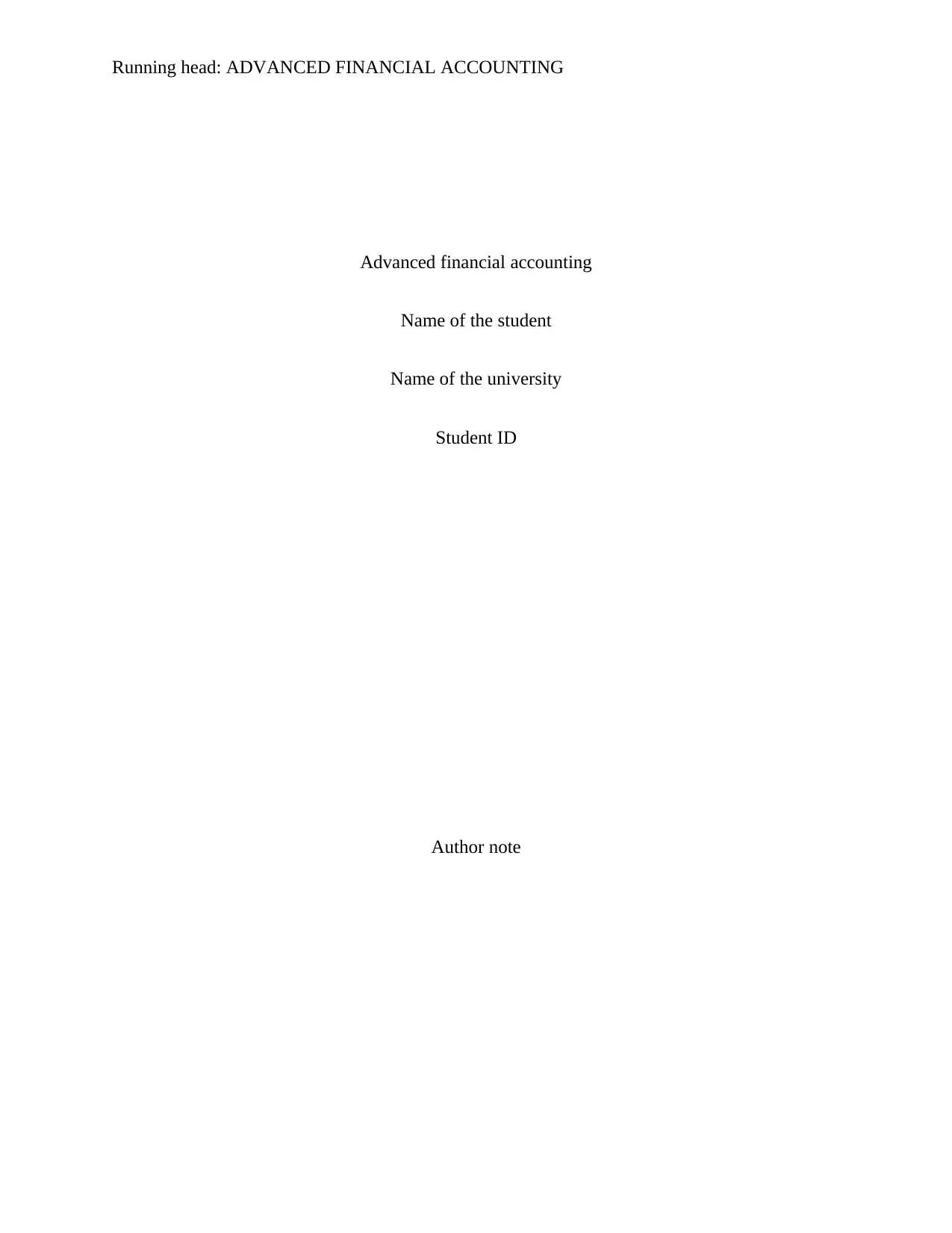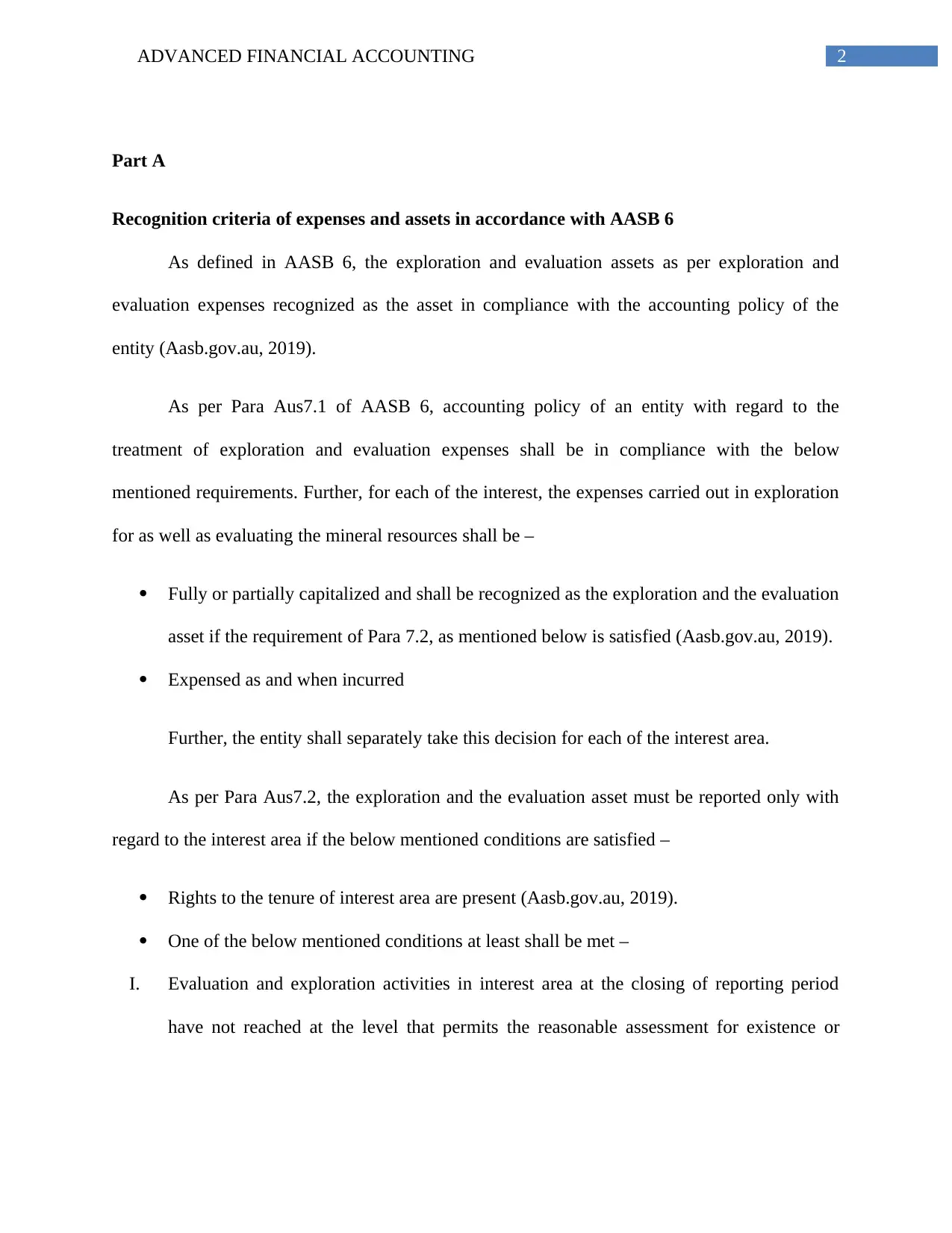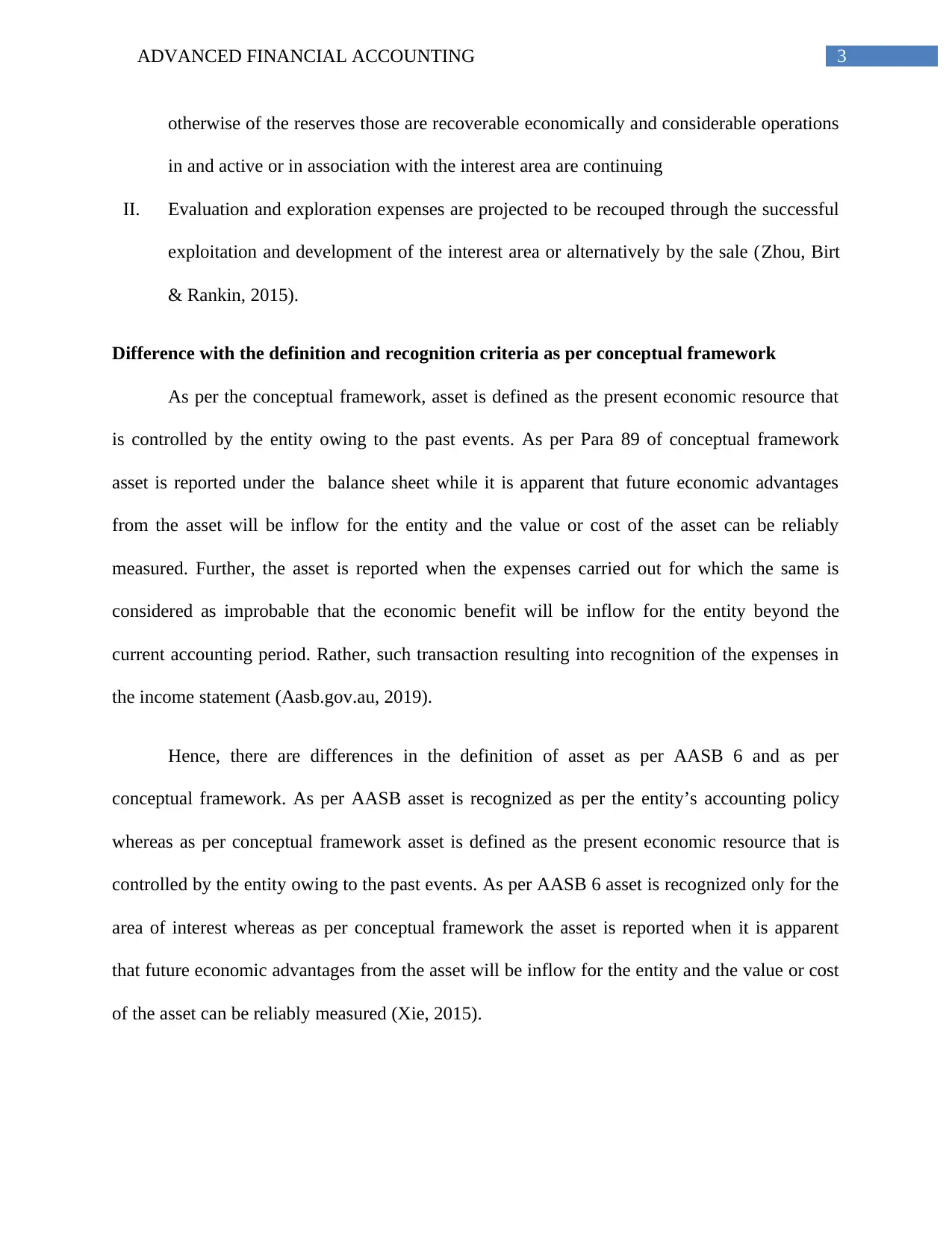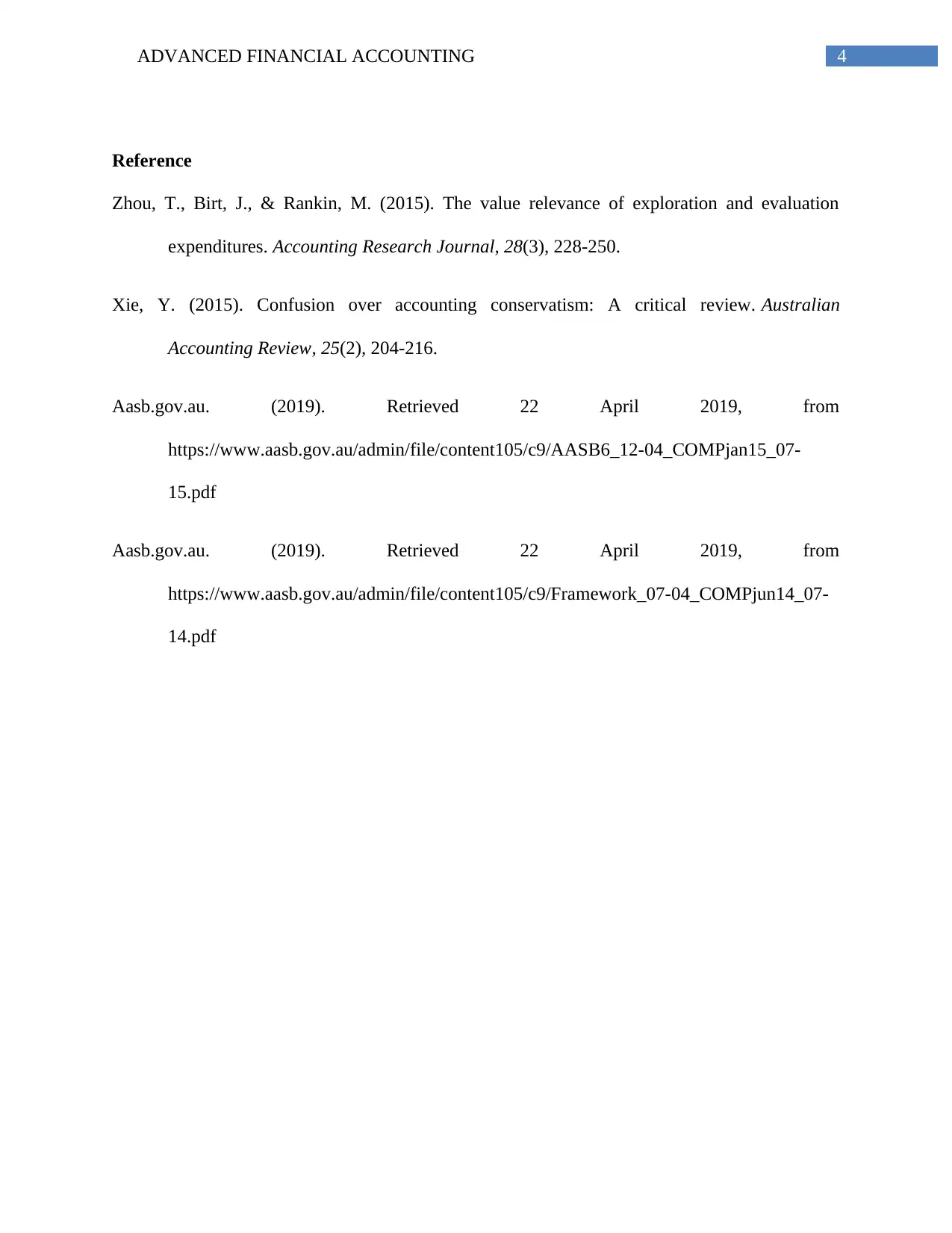University Financial Accounting Assignment: Expense & Asset Analysis
VerifiedAdded on 2023/01/20
|5
|727
|55
Homework Assignment
AI Summary
This assignment solution focuses on advanced financial accounting principles, specifically addressing the recognition criteria for expenses and assets in accordance with AASB 6. The document outlines the conditions under which exploration and evaluation assets are recognized, referencing the relevant paragraphs within AASB 6. Furthermore, it compares and contrasts the definitions and recognition criteria outlined in AASB 6 with those presented in the conceptual framework, highlighting key differences in asset definition and reporting. The assignment includes references to academic sources that support the analysis of accounting standards and frameworks. This comprehensive analysis provides a clear understanding of the intricacies involved in financial accounting practices, offering valuable insights for students studying advanced accounting concepts.
1 out of 5












![[object Object]](/_next/static/media/star-bottom.7253800d.svg)